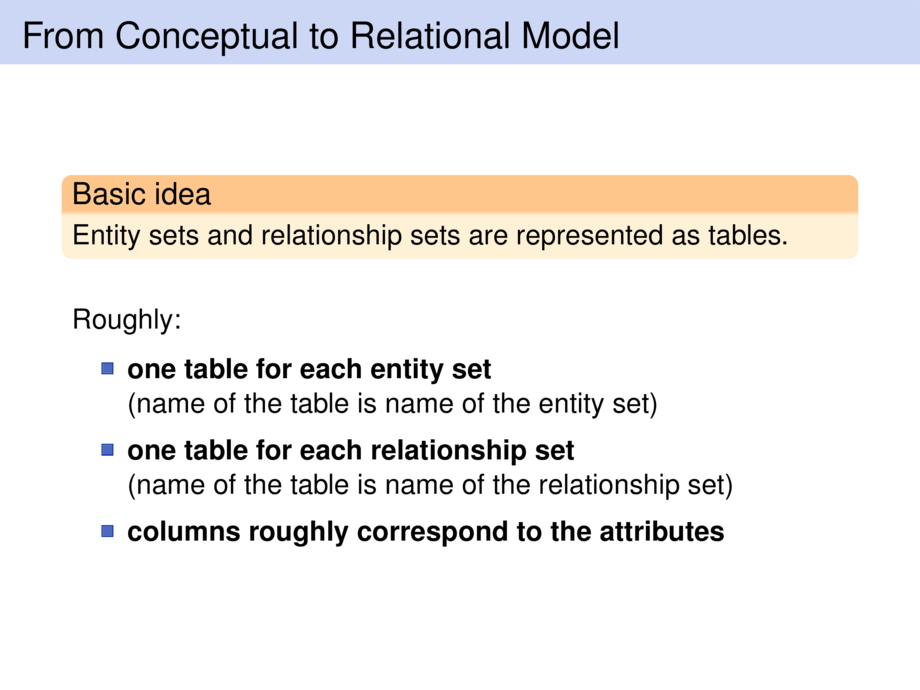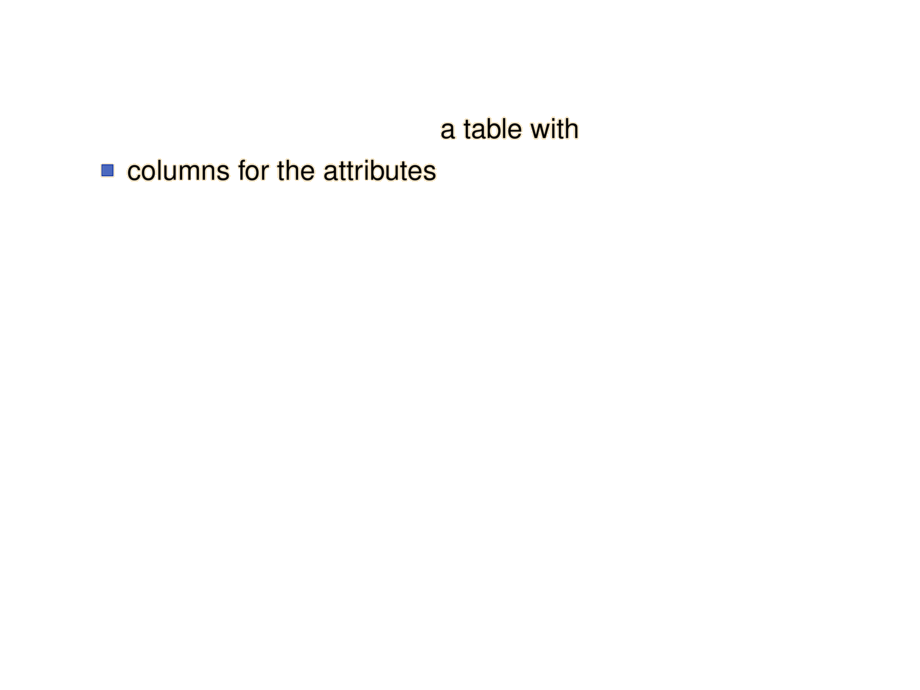



































































































6/75
\begin{frame}
\frametitle{Representing Entity Sets}
\begin{goal}{}
A \emph{strong entity set} becomes \mpause[1]{a table with
\begin{itemize}
\item columns for the attributes
\end{itemize}
}
\end{goal}
\smallskip
\begin{center}
\scalebox{.92}{
\begin{tikzpicture}[every edge/.style={link}]
\node[entity] (customer) {customer};
\node[attribute] (id) [above left of=customer,node distance=1.7cm,shift={(-2mm,-3mm)}] {\key{id}} edge (customer);
\node[attribute] (name) [above of=customer,node distance=1.3cm] {name} edge (customer);
\node[attribute] (street) [left of=customer,node distance=2.1cm] {street} edge (customer);
\node[attribute] (city) [below left of=customer,node distance=1.7cm] {city} edge (customer);
\end{tikzpicture}
}
\end{center}
\mpause{
\centering{\small\ttfamily
\colorbox{rellight}{%
\begin{tabular}[t]{|r|r|r|r|}
\multicolumn{4}{c}{Customer} \\ \hline
\hd{\key{id}} & \hd{name} & \hd{street} & \hd{city} \\ \hline
1 & Smith & North & Pittsburgh \\
2 & Jones & Alma & Philadelphia \\
3 & Brown & Main & New York \\
4 & Ford & Main & Washington \\
\hline
\end{tabular}%
}}
}
\end{frame}

